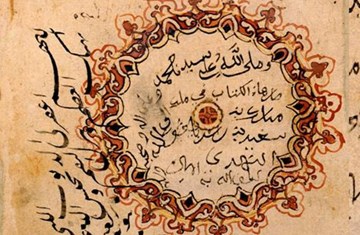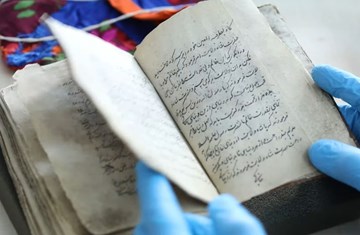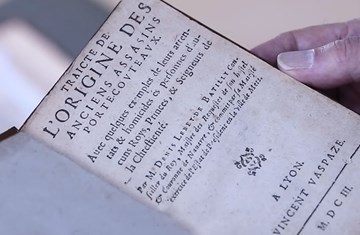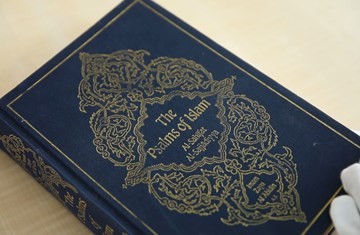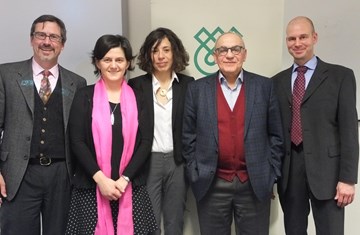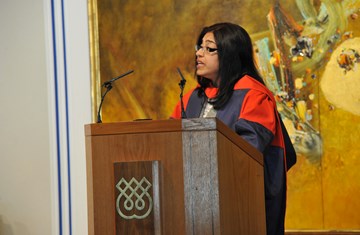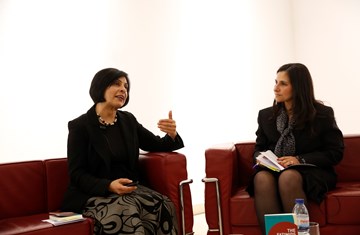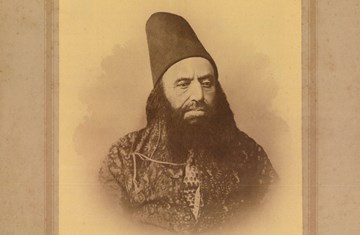An Early Source of Shi'i Piety: al-ل¹¢aل¸¥ؤ«fa ²¹±ô-³§²¹آلآلؤه»هiyya
The Ismaili Special Collections Unit in collaboration with Department of Communications and Development has released the third episode titled, An Early Source of Shi'i Piety: al-ل¹¢aل¸¥ؤ«fa ²¹±ô-³§²¹آلآلؤه»هiyya, as part of its video series, Islamic Heritage: Past and Present in celebration of Women’s History Month. It features Dr Gurdofarid Miskinzoda, Head of Shi’i Studies at the IIS.ج
Released in celebration of Women’s History Month, this short video features a scholar speaking about an early source of Shiâ€کi piety and history, highlighting its historical significance and contemporary relevance which is the aim of the video series. Dr Miskinzoda takes us on a journey of exploring a compendium of prayers, al-Sahifa al-Sajadiyya, with a focus on its context, transmission and significance, as well as the aesthetics and material aspects from the manuscript tradition of this historical work.
Ismaili Special Collections: Islamic Heritage Past and Present - An Early Source of Shi'i Piety: al-ل¹¢aل¸¥ؤ«fa ²¹±ô-³§²¹آلآلؤه»هiyya
This third episode forms part of a new series from the Ismaili Special Collections Unitجand the Department of Communications and Development. The series showcases items of historical importance held at ءٌء«تسئµ¹ظ·½ of Ismaili Studies, and highlight their contemporary relevance today.
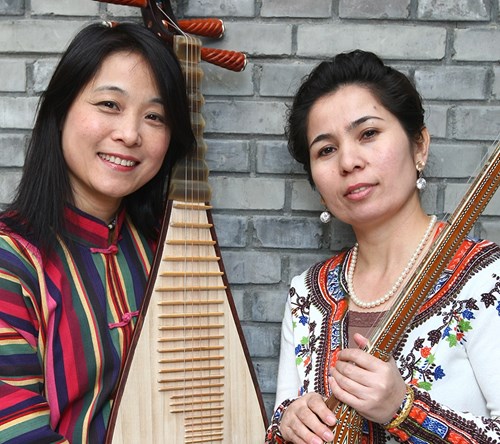
The video also includes music and vocals from two female musicians, Wu Man, pipa master and an intrepid explorer of world music, and Sanubar Tursun, a preeminent Uyghur female singer-songwriter and dutar player. The music and vocals are part of a track titled, Hanleylun (Traditional) from the album , produced by and ج
This is a manuscript of a work that relates to the early history of Shiâ€کi Islam. The title of the work is al-ل¹¢aل¸¥ؤ«fa ²¹±ô-³§²¹آلآلؤه»هiyya or al-ل¹¢aل¸¥ؤ«fa al-Kؤپmila ²¹±ô-³§²¹آلآلؤه»هiyya which can roughly be translated to English as "The Psalms..." or "The Complete Psalms of ²¹±ô-³§²¹آلآلؤه»ه". The title of the manuscript is related to, one could even say is derived from the honorific title of one of the earliest Shiâ€کi imams â€کAlؤ« b. al-ل¸¤usayn b. â€کAlؤ« b. Abؤ« ل¹¬ؤپlib who was mainly known by his honorific title, Zayn ²¹±ô-â€کؤ¶ؤ²ْ¾±»هؤ«²ش (the Ornament of the Worshippers) or ²¹±ô-³§²¹آلآلؤه»ه (the one who constantly prostrates in prayer and worship).
The importance of this work is based on the fact that it actually is one of the earliest sources and representatives of the Muslim historical and literary tradition, and, as many works that belong to that period, there are many issues with the history of the text but also the authorship and the history of its transmission. Therefore, many versions of this or many editions of this work contain a very long history of its transmission. This particular manuscript contains a very long history of the transmission of the text that takes us back to Muل¸¥ammad from his father which in other words means that this particular edition or this particular version of the text has been transmitted to Zayn ²¹±ô-â€کؤ¶ؤ²ْ¾±»هؤ«²ش through his son Muل¸¥ammad al-Bؤپqir and his grandson, Jaâ€کfar al-ل¹¢ؤپdiq. This is essentially a »ه³ـâ€کؤپ manual, a prayer manual, and, that is why it is sometimes also titled in many editions and manuscripts as al-ل¹¢aل¸¥ؤ«fa ²¹±ô-³§²¹آلآلؤه»هiyya al-Kؤپmila: adâ€کؤ«ya wa ³¾³ـ²شؤهآلؤه³ظ al-Imؤپm â€کAlؤ« b. al-ل¸¤usayn Zayn ²¹±ô-â€کؤ¶ؤ²ْ¾±»هؤ«²ش (The Complete Psalms of the Household of the Prophet or The Complete Psalms of ²¹±ô-³§²¹آلآلؤه»ه; prayers and supplications of Imam â€کAli b. al-ل¸¤usayn Zayn ²¹±ô-â€کؤ¶ؤ²ْ¾±»هؤ«²ش). As mentioned, it is a »ه³ـâ€کؤپ manual. In fact, it is claimed to be one of the oldest »ه³ـâ€کؤپ manuals and that’s why it is also known as The Complete Psalms of the Household of the Prophet.
In the complexity of studying this work is also related to the fact that there are several versions and redactions of this work but there are also more than twenty commentaries on this particular work. The most common version of the work consists of fifty-four supplications, some editions contain further fifteen ³¾³ـ²شؤهآلؤه³ظ (supplications). It is also translated to several languages. In particular, it has been translated to Persian as early as the Safavid Period and there is an English translation by the famous William Chittick that has been produced in the 1980s. This particular manuscript is beautifully presented, expensively decorated and it is also important because it contains a parallel Persian text in addition to the original Arabic. This makes it very useful for scholars but also for believers who speak either of the languages. They can consult either the Persian text or the Arabic or both so it becomes very useful. As I mentioned, the manuscript is beautifully and lavishly done which talks about the esteem this book was held even in the Qajar Period. It is also produced on thin gloss paper which was quite expensive at the time. It is written in a fine ²ش²¹²ُ°ى³َؤ« script and it is beautifully decorated especially the opening page is lavishly decorated. The outside of the text box is decorated in floral patterns in red, blue, green and gold and the textbox are also gilded and illuminated in the same colours. Each section begins with a text in a red gilded box which makes it very easy to distinguish where one chapter or one section begins and where the other one is ending. The colophon tells us that it has been produced in Dhإ« al-ل¸¤ijja 1279 AH which coincides with May 1863 of the common era which puts it in the Qajar Period. The colophon also tells us the scribe was named â€کAlؤ« Muل¸¥ammad b. Muل¸¥ammad al-Bؤپqir and it was commissioned or it was produced for a person named ؤ€qؤپ Mؤ«rzؤپ Maل¸¥mإ«d. This particular text is important for at least three reasons. First, obviously this manuscript itself is a work of art. It is an example of fine Islamic bookbinding and manuscript production in particular during the Qajar Period. It also tells us about the history of transmission of this text during the Qajar Period, but it also gives us as I mentioned an indication of how important this particular work was.
In fact, it is considered one of the most popular and important texts in the Shiâ€کi tradition only after the Qur’an and Nahj al-Balؤپgha, which are the collections of the sermons of the â€کAlؤ« b. Abؤ« ل¹¬ؤپlib, the first Imam of the Shiâ€کa. This work is also important for a second reason because obviously being ascribed to the Shiâ€کi imam the content of it becomes very important. Zayn ²¹±ô-â€کؤ¶ؤ²ْ¾±»هؤ«²ش was the third or fourth imam of the Shiâ€کa depending which group you talk about. He was born about 660 in Medina. He survived the massacre of Karbala’ in 680 as a result of which his father al-ل¸¤usayn b. â€کAlؤ« b. Abؤ« ل¹¬ؤپlib, which makes him the son of the first Shiâ€کa Imam and Fؤپل¹ima, the daughter of the Prophet, was brutally murdered. After the event of Karbala’, Zayn ²¹±ô-â€کؤ¶ؤ²ْ¾±»هؤ«²ش himself stayed away from direct confrontation with the authorities and chose to lead a pious life devoting himself to mainly worship, prayer and studying and that is why we have the title as ²¹±ô-³§²¹آلآلؤه»ه (the one who constantly prostrates in prayer and worship). But with the Imamat of Zayn ²¹±ô-â€کؤ¶ؤ²ْ¾±»هؤ«²ش, there also we see a change in the attitude of the imams and the community towards the scope and nature of the authority of the successor of the Prophet Muل¸¥ammad. First of all, the ل¸¤usaynid line becomes an important element in the lineage of the imams. Secondly, the nature of the authority or the station of the imam, the religious station of the imam was no longer seen to be dependant on or related to his political authority or his political office and power. We also see the beginning of the practise of taqiyya (dissimulation and concealment) which eventually leads to a shift in the doctrine of ¾±³¾ؤه³¾ؤه the eventual articulation of which is ascribed to no other than the son of Zayn ²¹±ô-â€کؤ¶ؤ²ْ¾±»هؤ«²ش, Muل¸¥ammad al-Bؤپqir and his grandson, Jaâ€کfar al-ل¹¢ؤپdiq. Thirdly, the importance of this work is obviously connected to the very content of this book.
As I mentioned, it contains prayers, supplications that are believed to be taught by Zayn ²¹±ô-â€کؤ¶ؤ²ْ¾±»هؤ«²ش. That in itself makes them very important for the daily practise and worship of the Shiâ€کa. In addition to that the content of this book is one of the finest examples of early Arabic literature in the Muslim tradition. It is an example of a very fine Arabic prose, let’s say and that makes it central. It continues to be important for the daily practice of the Shiâ€کa in terms of their practise of »ه³ـâ€کؤپ, dhikr (remembrance) and ³¾³ـ²شؤهآلؤه³ظ (supplication) which are all considered different forms of worship. We are therefore very proud to house this particular manuscript in our special collections and we ensure that scholars from around the world have access to it and we also make sure that we preserve it for the future generations.

